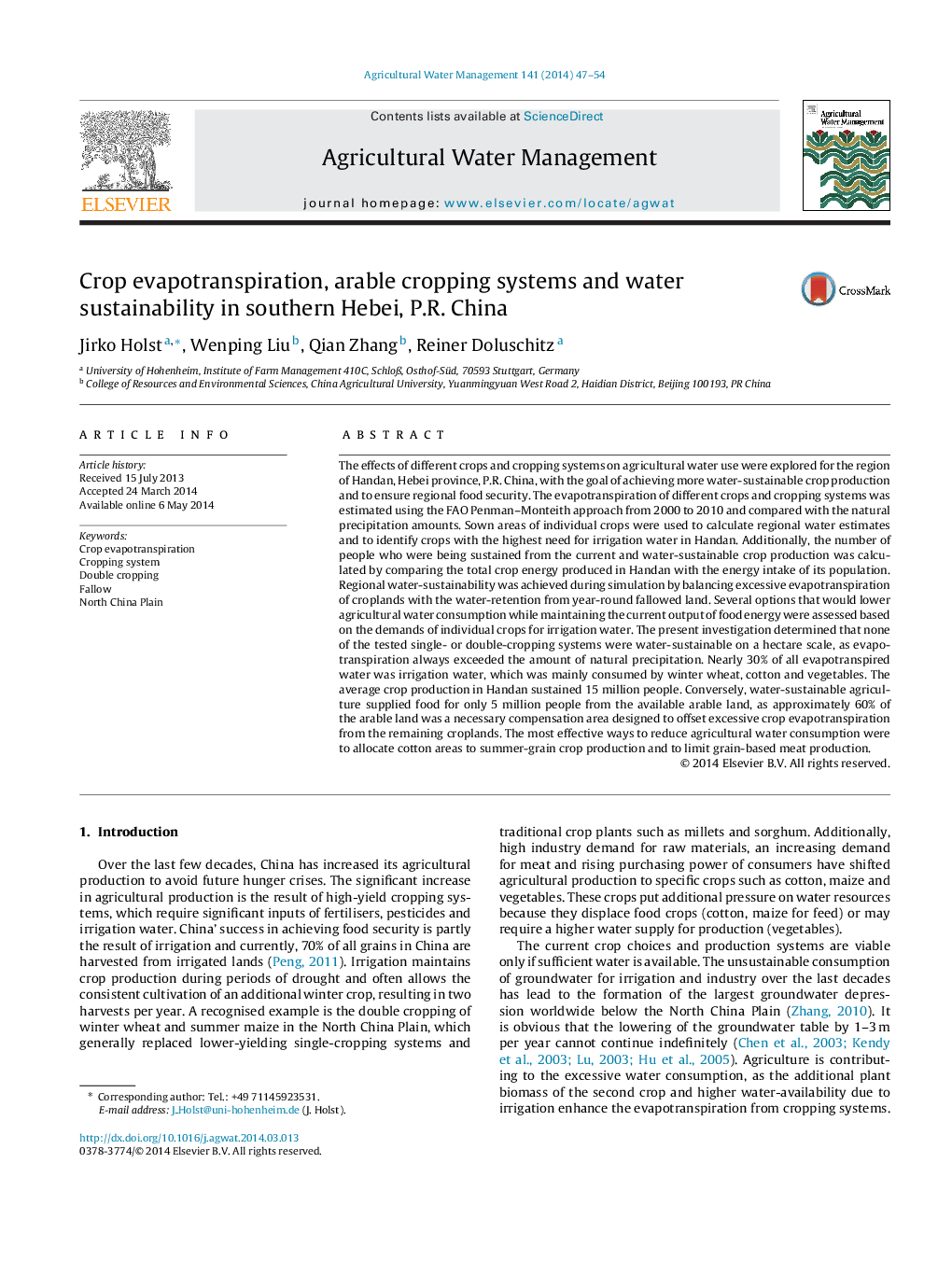| کد مقاله | کد نشریه | سال انتشار | مقاله انگلیسی | نسخه تمام متن |
|---|---|---|---|---|
| 4478657 | 1622938 | 2014 | 8 صفحه PDF | دانلود رایگان |

• Evapotranspiration of crops and cropping systems is simulated for southern Hebei.
• Water-sustainability requires > 60% of arable land for soil water replenishment.
• Number of people sustained from water-sustainable crop production is simulated.
• Regional food security cannot be achieved with a water-sustainable crop production.
• Removing cotton and limiting feed crops reduce need for irrigation water by ≈ 2/3.
The effects of different crops and cropping systems on agricultural water use were explored for the region of Handan, Hebei province, P.R. China, with the goal of achieving more water-sustainable crop production and to ensure regional food security. The evapotranspiration of different crops and cropping systems was estimated using the FAO Penman–Monteith approach from 2000 to 2010 and compared with the natural precipitation amounts. Sown areas of individual crops were used to calculate regional water estimates and to identify crops with the highest need for irrigation water in Handan. Additionally, the number of people who were being sustained from the current and water-sustainable crop production was calculated by comparing the total crop energy produced in Handan with the energy intake of its population. Regional water-sustainability was achieved during simulation by balancing excessive evapotranspiration of croplands with the water-retention from year-round fallowed land. Several options that would lower agricultural water consumption while maintaining the current output of food energy were assessed based on the demands of individual crops for irrigation water. The present investigation determined that none of the tested single- or double-cropping systems were water-sustainable on a hectare scale, as evapotranspiration always exceeded the amount of natural precipitation. Nearly 30% of all evapotranspired water was irrigation water, which was mainly consumed by winter wheat, cotton and vegetables. The average crop production in Handan sustained 15 million people. Conversely, water-sustainable agriculture supplied food for only 5 million people from the available arable land, as approximately 60% of the arable land was a necessary compensation area designed to offset excessive crop evapotranspiration from the remaining croplands. The most effective ways to reduce agricultural water consumption were to allocate cotton areas to summer-grain crop production and to limit grain-based meat production.
Journal: Agricultural Water Management - Volume 141, 31 July 2014, Pages 47–54